Decorating a bed with unusual flowering - the Japanese Rose tomato and its advantages over other varieties
Mid-season Japanese rose tomatoes are a productive and beautiful variety for greenhouses and vegetable gardens. Easy ripening, the ability to ripen fruits outside the plant, ease of cultivation and care make the crop popular with experienced farmers and amateur gardeners.
In this article we will talk about the advantages and disadvantages of the variety, the nuances of agricultural technology and disease prevention.
Description of the variety
Japanese rose tomatoes were bred by Russian breeders. They were faced with the task of creating a crop ideal for growing in any climatic conditions with minimal labor costs. The result exceeded expectations: the plant determinant type shows excellent results when cultivated in greenhouses and open ground.
During the flowering period, the bushes look elegant and more like ornamental plants. Thanks to the abundant and beautiful flowering, the variety got its name.

Distinctive features
The variety has the following features:
- plant height - 60–80 cm;
- as the clusters grow, they form clusters with 5-6 fruits;
- branched bushes with strong rhizomes;
- does not need gartering or shaping.
Fruit characteristics, yield
Tomato variety Japanese rose:
- characterized by a high content of vitamins and microelements;
- suitable for allergy sufferers and baby food;
- have small dimensions, weight no more than 150 g;
- have a bright pink color and a round shape, reminiscent of a heart with a sharp tip;
- have a thin but at the same time durable skin and a ribbed stalk;
- not prone to cracking;
- have juicy sweet pulp with a small number of seeds;
- They are stored for a long time and tolerate transportation well.
The variety is characterized by high productivity. On average, 5-6 kg are collected from one bush, with a maximum of 8 kg.
Growing and caring for seedlings
The crop is grown by seedling method. Before sowing, the seeds are treated with growth stimulants. There is no need for disinfection, since the manufacturer took care of this. The process begins 50–60 days before the intended planting in the ground.
The seed material is soaked in biological preparations to accelerate germination (Zircon, Novosil, Epin-extra are suitable).
Soil for containers is prepared on the basis of black soil and sand and disinfected in the oven. Then mineral fertilizing is applied. After cooling, the soil is poured into plastic trays or special pots. The top layer is moistened with settled water at room temperature and the seeds are planted to a depth of 1–1.5 cm with an interval of 5 cm. A cellophane film is stretched over the top and left in a place inaccessible to sunlight at a temperature of +23 ° C until shoots appear.
Then the film is removed and the seedlings are transferred to the windowsill. Picking is carried out after the first true leaves appear. To do this, take peat or plastic cups.
Important! Young sprouts need good lighting. If it is not enough, additionally use phytolamps.
The seedlings are irrigated with warm water once every 2-3 days.
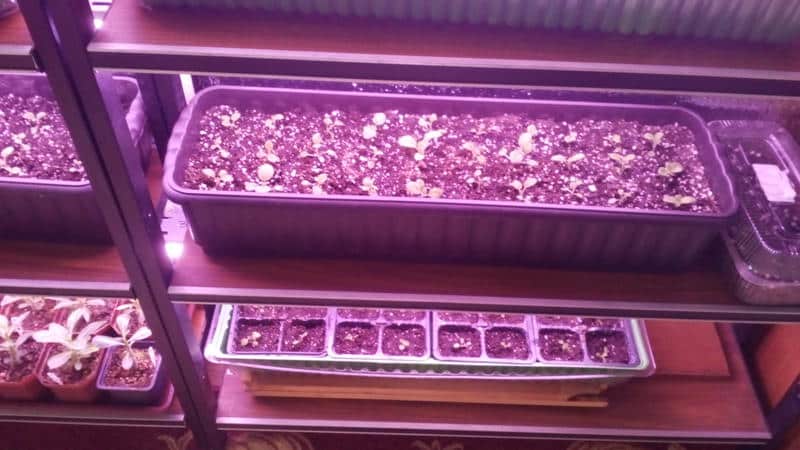
Growing tomatoes
Film greenhouses are considered ideal conditions for cultivating the Japanese rose variety.In the southern regions of the country, planting in open ground is acceptable.
Landing
Planting in greenhouses begins in early May. By this time, the tomatoes will have become stronger and will be ready for “relocation”. To plant outdoors, wait until early June to ensure there is no threat of frost.
The soil is first loosened and fertilizers are applied. The holes are dug at a depth of 15 cm and moistened abundantly with warm water. For the purpose of disinfection, the soil is watered with a strong solution of potassium permanganate.
Planting density is no more than 3 seedlings per 1 m2.
Care
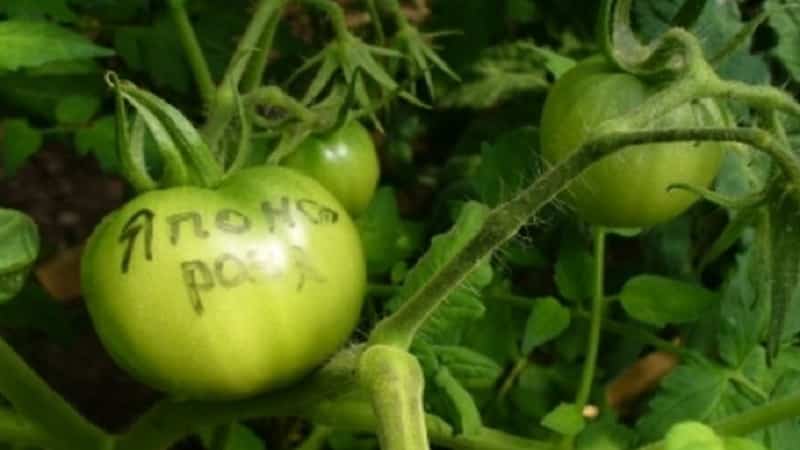
Compliance with the rules of caring for seedlings ensures stable yields:
- The bushes are formed into 1-2 stems so that nutrients can easily penetrate into the fruits.
- Before the first cluster of plants appears, periodically stepson.
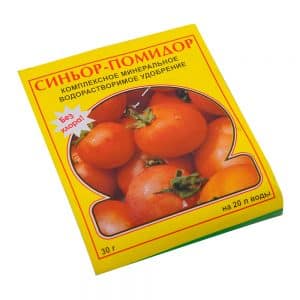
- Greenhouses ensure optimal air circulation and sufficient lighting.
- Culture needs abundant, but infrequent watering warm, settled water. Pour it at the root, trying not to get on the foliage.
Throughout the growing season, 3-4 feedings are carried out. First, nitrogen is added, then potassium and phosphorus (Superphosphate and Urea are suitable). Organomineral fertilizers are just gaining popularity and may soon take a leading position. Such fertilizers consist of substances of mineral and organic origin. Together, they improve the composition of the soil, eliminate the lack of nutrients, and increase the fruiting period. “Signor Tomato” and “Baby” are considered the best.
Diseases and pests
The Japanese rose variety is resistant to late blight and fusarium. However, preventive treatment against bacterial infections and insect pests It won't hurt the tomatoes.
Before planting seedlings, the soil is treated with copper sulfate or a strong solution of potassium permanganate, which kill microbes. Treatment with Fitosporin prevents fungal infection.
If signs of phytosporosis disease are detected (brown spots and stripes on petioles and stems, gray-brown on fruits and leaves), the affected greens and tomatoes are removed, and the bushes are irrigated with copper sulfate.
Spraying helps fight spider mites, thrips, and whiteflies:
- celandine decoction (400 g of fresh herbs, pour 1 liter of boiling water, leave for 24 hours);
- infusion of onion peel (100 g of raw material, pour 5 liters of cold water, leave for 5-6 days);
- insecticides "Tanrek", "Break", "Novaction", "Sirocco".
Ammonia is effective against slugs: dilute 500 ml of 10% solution in 2.5 liters of water and irrigate the bushes.
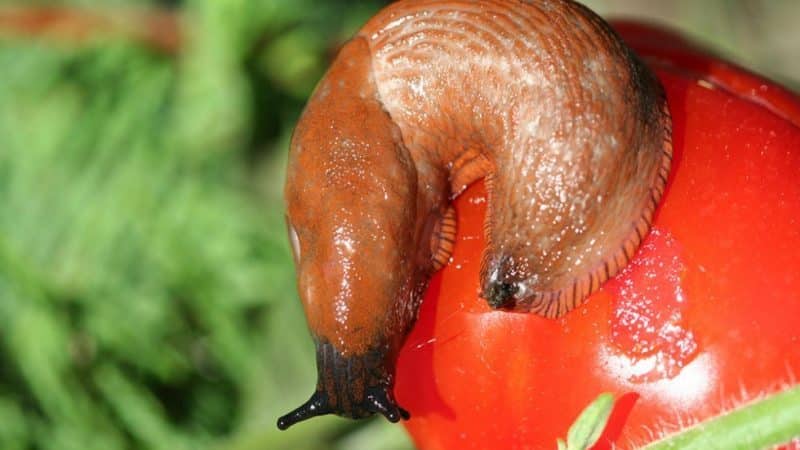
A solution of laundry soap helps destroy aphids. Grate 2 pieces of laundry or tar soap and pour in 2 liters of warm water, stir until completely dissolved and add another 8 liters of water. Spray the bushes with the mixture.
Harvesting and application
The fruits ripen 110–115 days from the moment of sowing. Due to their versatility and excellent taste, tomatoes are suitable for preparing vegetable salads, tomato juice, pasta, adjika, pickling, and pickling.
Advantages and disadvantages
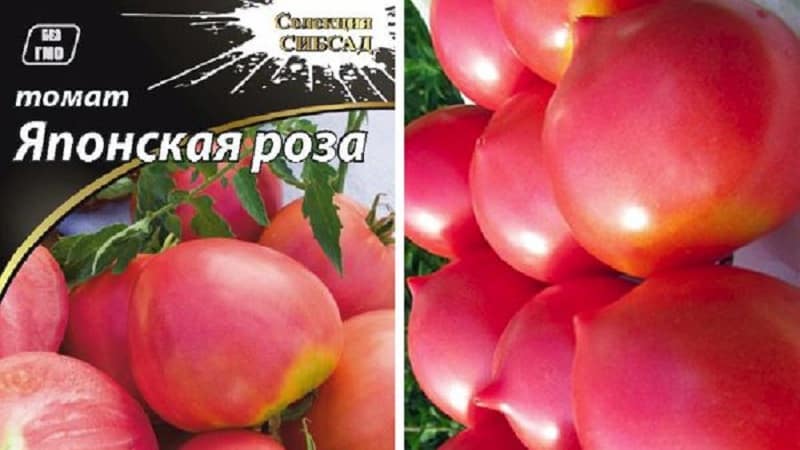
The advantages of the Japanese rose include:
- ease of care;
- juicy and sugary pulp with a minimal amount of acid;
- high productivity;
- resistance to viral infections;
- no need for a garter;
- possibility of storage in a cool place for 1-2 months without loss of quality;
- small number of seeds;
- high resistance to transportation.
As growing experience shows, the Japanese rose has no obvious disadvantages. To succeed, you just need to follow the rules of watering, apply fertilizers on time and treat the bushes from insects.
Farmer reviews
Despite the fact that the variety appeared on the market relatively recently, many have managed to appreciate it.
Nadezhda, Shuya: “I tried to grow the variety in open ground, although it is intended for greenhouses. The yield was lower than stated, but there were no problems with seedling germination and further care. The tomatoes have a pleasant sweet taste, the skin does not crack, and they last a long time in a cold place.”
Oksana, Bobrov: “I planted the Japanese rose variety last year as an experiment: several bushes in a greenhouse and in the open air. The culture is unpretentious in care and rarely gets sick. I used to think that tall bushes were more suitable for a greenhouse, but I radically changed my mind. The harvest was a great success, the tomatoes were identical, bright pink and very tasty. In open ground, tomatoes grew without problems, but the yield was no more than 2-3 kg per bush.”
Conclusion
The Japanese Rose variety is the best choice for beginning gardeners. The crop is easy to care for and has stable yields in film greenhouses (an average of 5-6 kg of tomatoes per plant).
Low-growing bushes do not require staking and constant pinching. The sweet fruits are shaped like a heart. Vegetables do not lose quality during transportation and are able to ripen on their own.